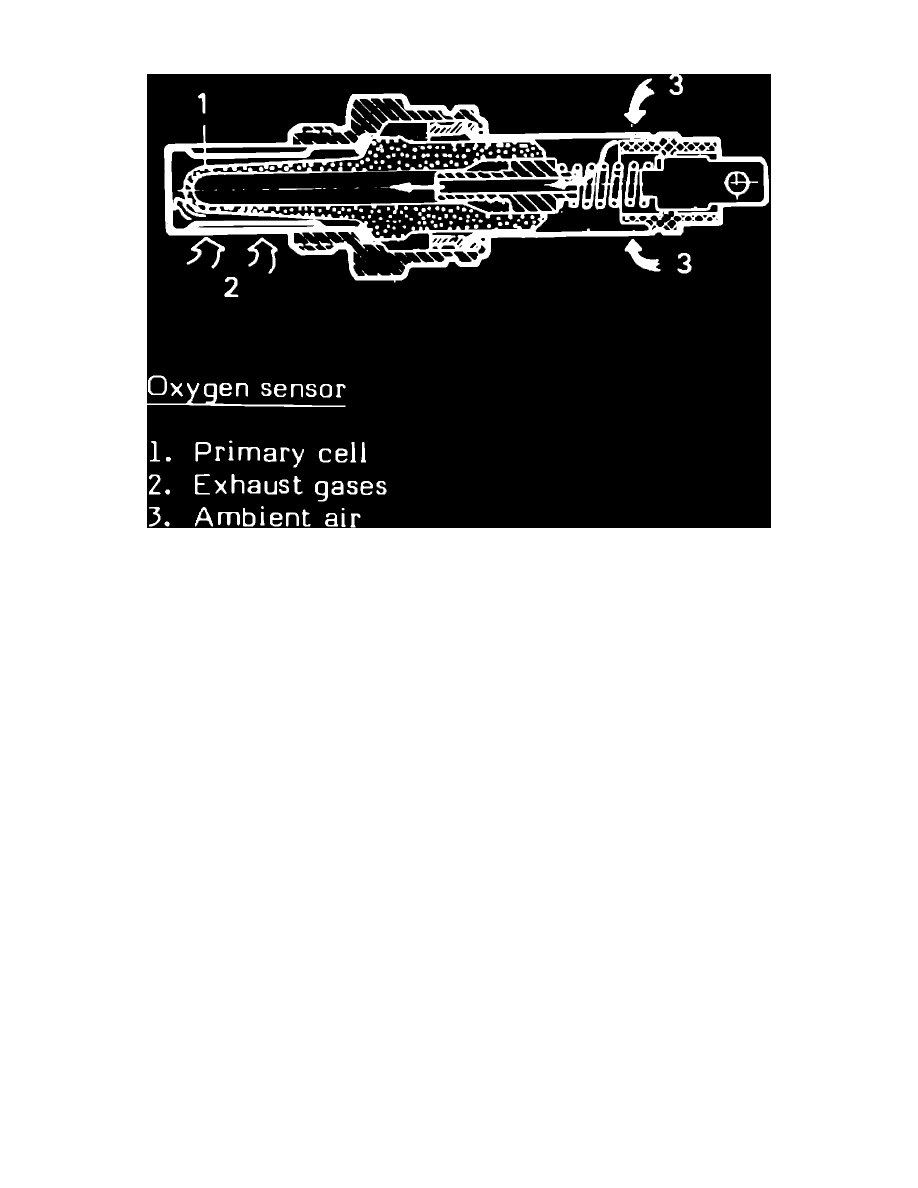900 L4-1985cc 2.0L DOHC Turbo EFI (1985)

Oxygen Sensor: Description and Operation
Fig. 4 Oxygen sensor cross sectional view
The oxygen sensor provides one of several input signals that the ECU process to determine the proper air fuel ratio. Other inputs include engine RPM,
engine temperature, throttle position and air mass. One of two types of oxygen sensors will be used. The first type, a single wire type, has only one wire
going to the sensor and only provides an output signal to the control unit. The second type has three wires, one of which provides an output to the control
unit while the remaining two wires activate an internal heating element in the sensor to help it operate faster on cold starts.
The oxygen sensor is a primary cell with a solid electrolyte and resembles a spark plug, Fig. 4. The electrolyte consists of a ceramic material called
zirconium oxide. The electrolyte is in tubular form with one of the ends blanked off. The surface has been coated with platinum to be electrically
conductive.
The outside of the electrolyte is exposed to the exhaust gases and the inside to ambient air. When there is a difference in the partial oxygen pressure
between the outside and inside of the tube there is an increase in voltage which raises the ideal air to fuel ratio. This voltage increase is then amplified in
the control unit, and used to regulate the amount of fuel delivered. To operate efficiently, the sensor must be kept at 600°F (320°C). The sensor must be
replaced every 30,000 miles as the strength of the signal decreases with age. A mileage counter has been installed which activates a warning light. The
counter should be reset when sensor is replaced.
